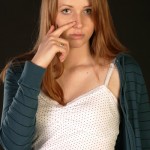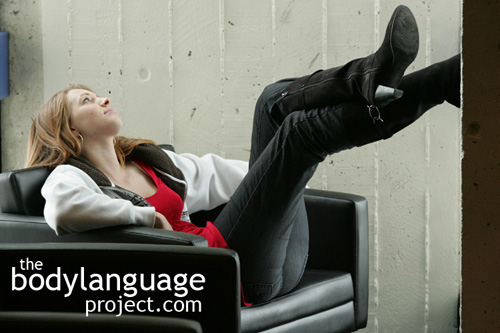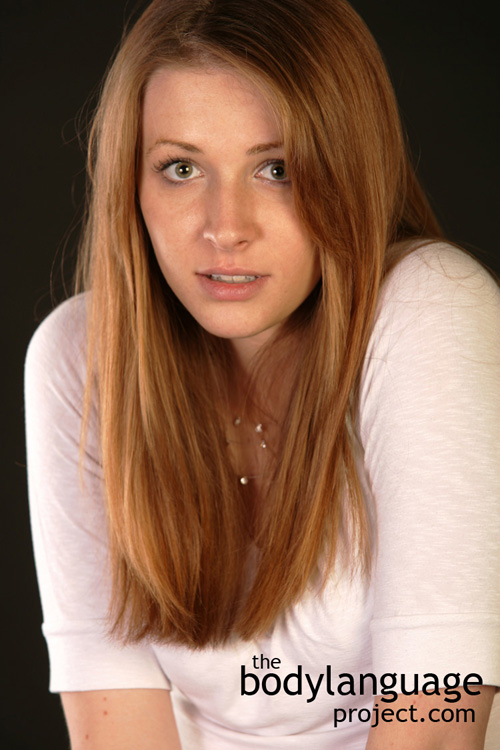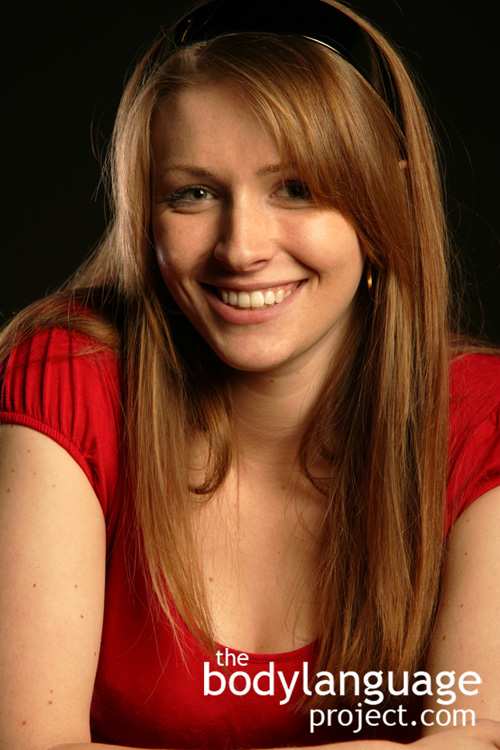As discussed in chapter 2, there are six main facial expressions that are found throughout the world. They are happiness, sadness, surprise, fear, anger and disgust. Each expression involves three independent parts of the face, the forehead and eyebrows, the eyes, eyelids and upper part of the nose called the “root” and the lower part of the face including the lower part of the nose, cheeks, chin and mouth. Here is a breakdown of the six facial expressions:
_____________________________________________________________________________________________
Happiness (smile): The gesture is done by slightly raising the lower eyelids, wrinkles appear below them, crow’s feet may form at the edge of the eye. The mouth lengthens as the corners move out and up. Lips may part to show upper teeth and the cheeks rise and bulge narrowing the eyes and creating wrinkles around the nose and mouth.
_____________________________________________________________________________________________
Sadness: Sadness is controlled mainly by the mouth where it drops at the corners. The inner eyebrows rise producing a triangular shape between the root of the nose and the eyes. The forehead might show wrinkles and the eyes may appear moist with tears.
_____________________________________________________________________________________________
Surprise: The eyebrows curve upwards, wrinkles form in the forehead and the whites of the eyes become visible through eye widening. The jaw becomes slack and opens.
_____________________________________________________________________________________________
Fear: This expression is sometimes confused with surprise as in much of the world only subtle differences exist. During fear, eyebrows rise and are pulled together, and curve although less than in surprise. Wrinkles appear in the forehead, but do not cross the entire forehead like in the surprised expression. The upper eyelids rise, as in the surprise expression, to expose the white of the eyes and the lower eyelids also rise. The lips may be stretched back and the mouth opened.
_____________________________________________________________________________________________
Anger: In this expression, eyebrows are pulled down and inward and creases form between the eyebrows. The eyes narrow and take on a hard stare. The lips are often tightly clenched and the corners pulled downward. The nose is sometimes flared.
_____________________________________________________________________________________________
Disgust: This facial expression contains the most meaning in the eyes and the lower face. Here, the lower eyelids rise and lines appear in the skin below them. The cheeks move up, the nose is wrinkled and either the upper lip is raised or both are raised.
_____________________________________________________________________________________________
Ever thought about why our noses are down-turned rather then some other orientation, such as sideways or facing upward? The answer has nothing to do with preventing rain from falling in! Disgust is a very honest facial expression when it happens because it can happen in microseconds to indicate a particularly distasteful thought. The facial expression is rooted in rejection of spoiled foods which is why a large portion of it involves the nose which is used to detect off-putting scents. To evoke disgust, just imagine the smell or rotting flesh! In real life it instantly causes the nose to snarl and prevents us from stomaching potentially deadly foods.























